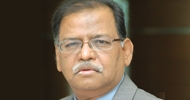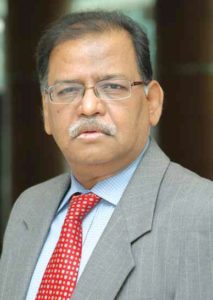
“e-Governance of today will be the fountainhead for governance of tomorrow,” says Ravi S Saxena, Additional Chief Secretary, Department of Science & Technology, Govt. of Gujarat
 Gujarat has taken many new initiatives in e-Governance. How would you rate the state’s response to e-Governance?
Gujarat has taken many new initiatives in e-Governance. How would you rate the state’s response to e-Governance?
Gujarat has been at the forefront of e-Governance and has demonstrated a vision and foresight as is evident from the fact that we set up Gujarat State Wide Area Network (GSWAN) way back in 2001. Today this is the largest end to end IP-based network across the state, covering almost 38000 nodes. We have almost 50,000 mail addresses on our Exchange Server. We also have all districts and talukas of Gujarat covered vertically and horizontally with this State wide Intranet.
We have a robust State Data Centre and most of the applications have moved to the data centre. The setup of SDC and Mini Data Centres operates as a Government Cloud (G-Cloud) for rolling out departmental citizen services, due to the collaborative policy structure of the Department of the Science & Technology (DST). This SDC provides Infrastructure-as-a-Service (IAAS), as the departments’ key result areas are limited to developing their applications alone and the core infrastructure is provided and managed by the DST. Gradually, the SDC also would provide Platform-as-a- Service (PAAS) to all departments who are supposed to host their applications in the SDC. This has become possible due to collaborative method of DST acting as a support organisation for the IT Road map of each department, thereby bringing uniformity in their standards and framework for applications. This shifts the onus of infrastructure availability, platform suitability and major security concerns from the departments to the SDC and yet the departments will have full control over the operations and administration of their application.

Also tell us about your projects for bringing more connectivity to rural areas.
Most remarkable of all, we have eGram – a VSAT broadband network operational since 2007 across 14000 villages of Gujarat making it possible to think of rolling out applications for complete rural population. In terms of connecting villages and rural populations, this is the only experiment in India, and even in many other countries of the world. We are able to run 35 pairs of video conferences in a 13 mbps exclusively dedicated pipe within the e Gram network across villages or between Taluka and villages. Chief Ministers’ grievance-redressalthrough- video program SWAGAT also uses this facility for interaction with rural populations. We also carry out webcasting through PAWAN (Panchayat Wide Area Network) channels.
Gujarat State Geospatial Data Infrastructure has integrated GIS with departmental ERPs for fine-tuning the process of planning for grassroots level resource allocation. It has been appreciated even by the Planning Commission of India. We have also been able to implement Sarva Shiksha Abhiyaan project providing 11 computers, one display unit and KU band dish antenna which enabled each school to have satellite based learning sessions running in more than 15000 schools. The e-Governance applications in Gujarat have brought not only transparency and accountability in the administration but have also sensitized the people about its advantages and effectiveness over conventional procedures. In a nutshell, it’s been an inclusive and holistic response to e-Governance since we began our journey.
Please shed some light on the progress of UIDAI scheme in your state.
Aadhar is still at the preliminary stage of development in Gujarat, but we have developed the policy of making all the existing applications to become Aadhar compliant. This would finally help in unifying the large number of demographic data bases of the people of Gujarat. We need to ultimately reach a level, where a citizen should never be asked to furnish information about him, much less prove it, before an entitlement is rolled out to him or her. Some countries in the west have made it a law. But in India ordinary citizen still goes from pillar to post to prove who s/he actually is.

The e-Governance projects that have been immensely successful include
• Statewide Integrated Hospital Management System
• e-Mamta (tracking mother and child health)
• Drugs Logistics Information System (Central Monitoring for Drugs Stock and Health Programs)
• 104-Non Emergency Helpline, tele-medicine
• 108-Emergency Helpline in health sector
• Online Teachers Recruitment and Results, educational and skills oriented content broadcasting through satellite in education sector
• Crop management, fertilizers and seeds information, live interactions with Agriculture University scientists, livestock monitoring in agriculture sector
• e-Ration card, bar-coded coupons, bio-metric based verification, stock monitoring and supply management in State wide Food and Civil Supplies sector
• e-Court, State Wide Attention on Grievances by Application of Technology(SWAGAT) chaired by Hon’ble CM of the State
• District, Taluka(Block) and Village(SDTV) level in Grievance Redressal
• Citizen service delivery framework at SDTV as well as in municipal corporations, municipalities(MCM)
In your opinion what are the ways by which the IT industry empowers diverse human assets and raises expectations?
The growth witnessed on account of ICT in the last 3 decades surpasses the development of the entire human history. It has changed the culture, civilization and the entire thought process of human being triggering the need for innovation in day to day life. ICT has raised the bar regarding efficiency of the delivery of services exponentially, thereby raising productivity levels equally high.
A whopping 68% Indian population live in rural areas. Increased tele-density, broadband reaching villages, digital content based training in schools, skill development and scientific advisory in agriculture industry, crop management and informal sectors through VSAT channels, digital land record and bio-metric based identity for resource distribution are some of the major ways which raises the productivity and empowers the rural life.
On the other hand, while the Urban India is growing at the rate more than 51% on average, it is a challenge to maximize the availability of e-Facilities along with high tech infrastructure to cater to the high demand arising from such regions. Smart grids for civic services and utility payments, smart classrooms, m-Compliant information availability, automated security and traffic management are the basic ways essential to Urban Sector touching lives of humans. With growing inclination towards Electronics Manufacturing Clusters setup across the country, in upcoming years, the demand for skilled men power is going to boost in the ICT sector.
Given the fact that technology keeps on evolving at a rapid pace, where do you see the e-governance ten years from today?
e-Governance of today will be the fountainhead for Governance of tomorrow. Along with technology evolution, the Government must also reengineer its conventional procedures. Ten years down the line I see the aspcts of e-mi- Governance getting converged ultimately into “The Governance”. The existing infrastructure, procedures, network, technology, applications will work in unified environment where every requirement will be served as a service instead of current scenario of individual activity per se. With setups like G-Cloud and implementation of open standards, the entire existing e-Infrastructure will enable the environmentally challenged remote states to roll out the Services on any platform. However, adoptability and citizen engagement will continue to be a cause for concern. It will be subject to policy level decision; I foresee the coming into being of an Open Government system, where there is scope for easier collaboration between departments and citizens.
Be a part of Elets Collaborative Initiatives. Join Us for Upcoming Events and explore business opportunities. Like us on Facebook , connect with us on LinkedIn and follow us on Twitter, Instagram.











